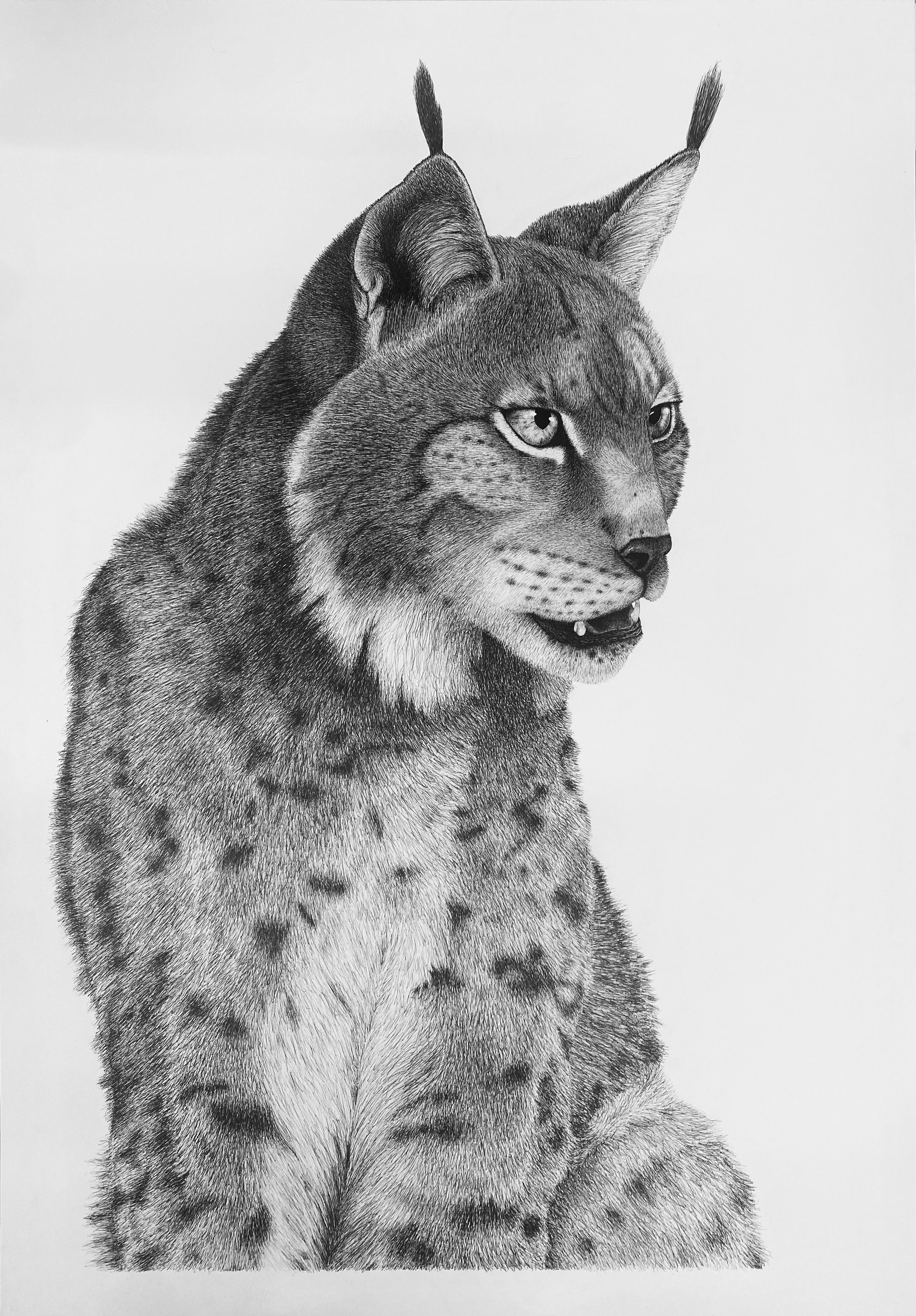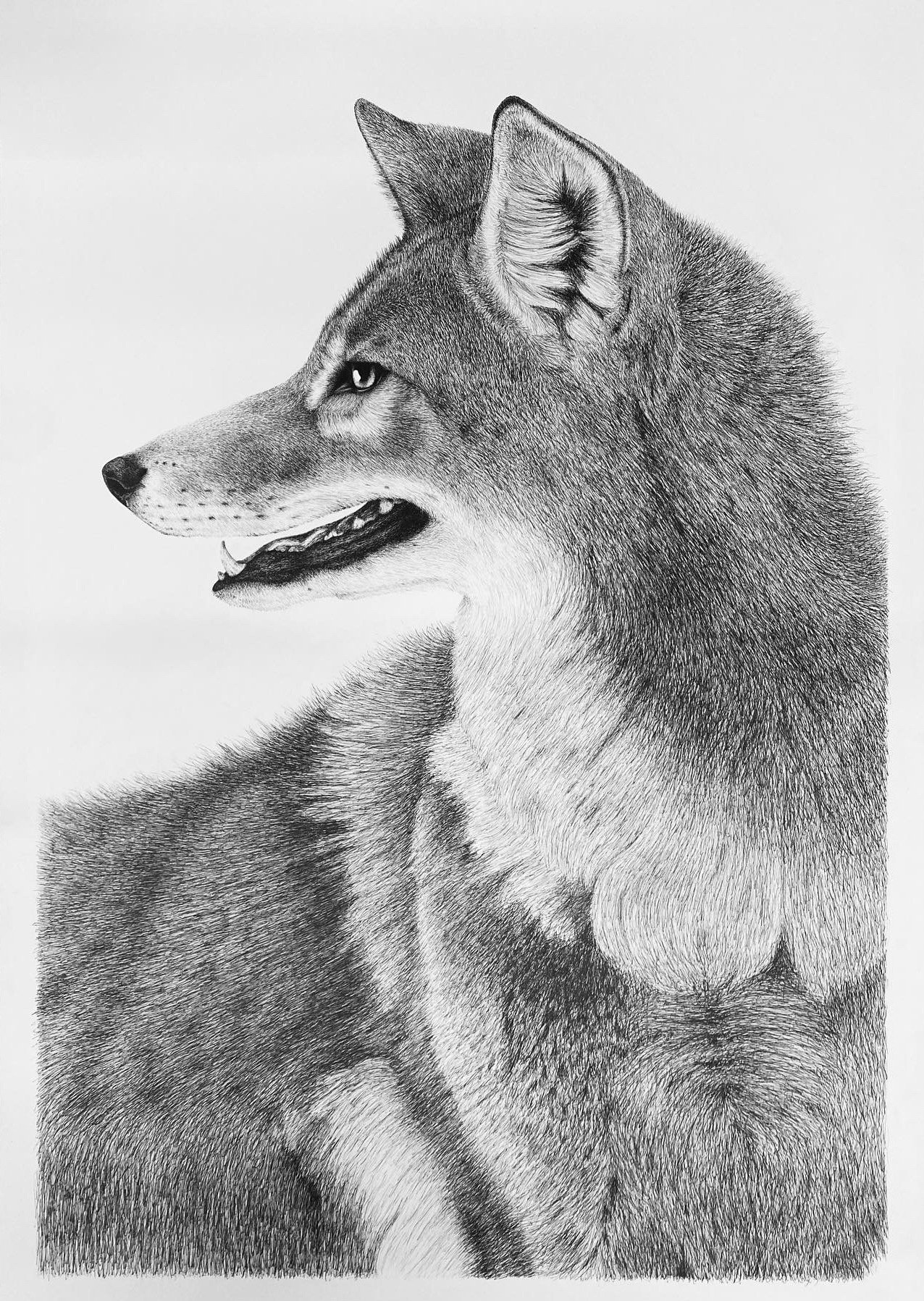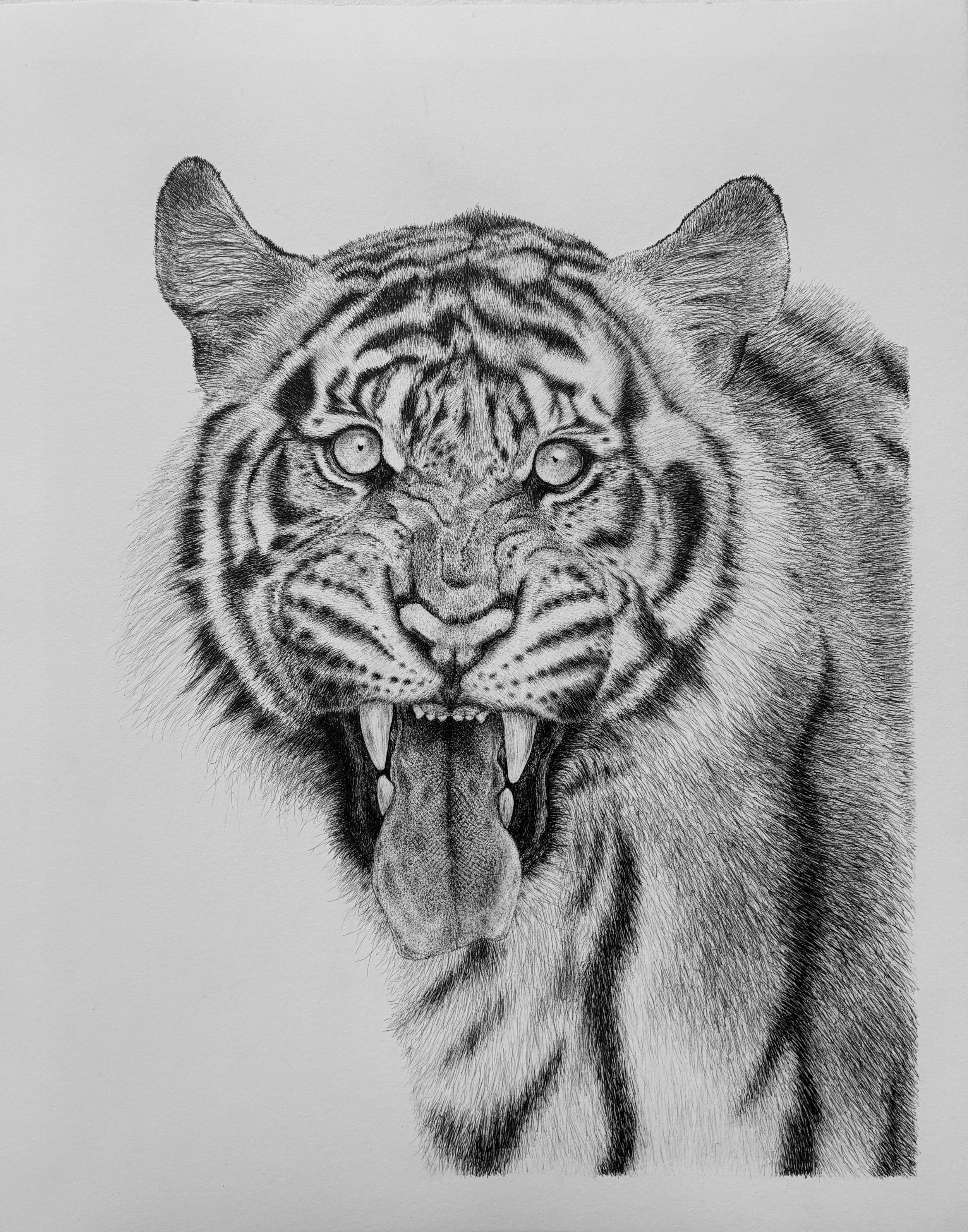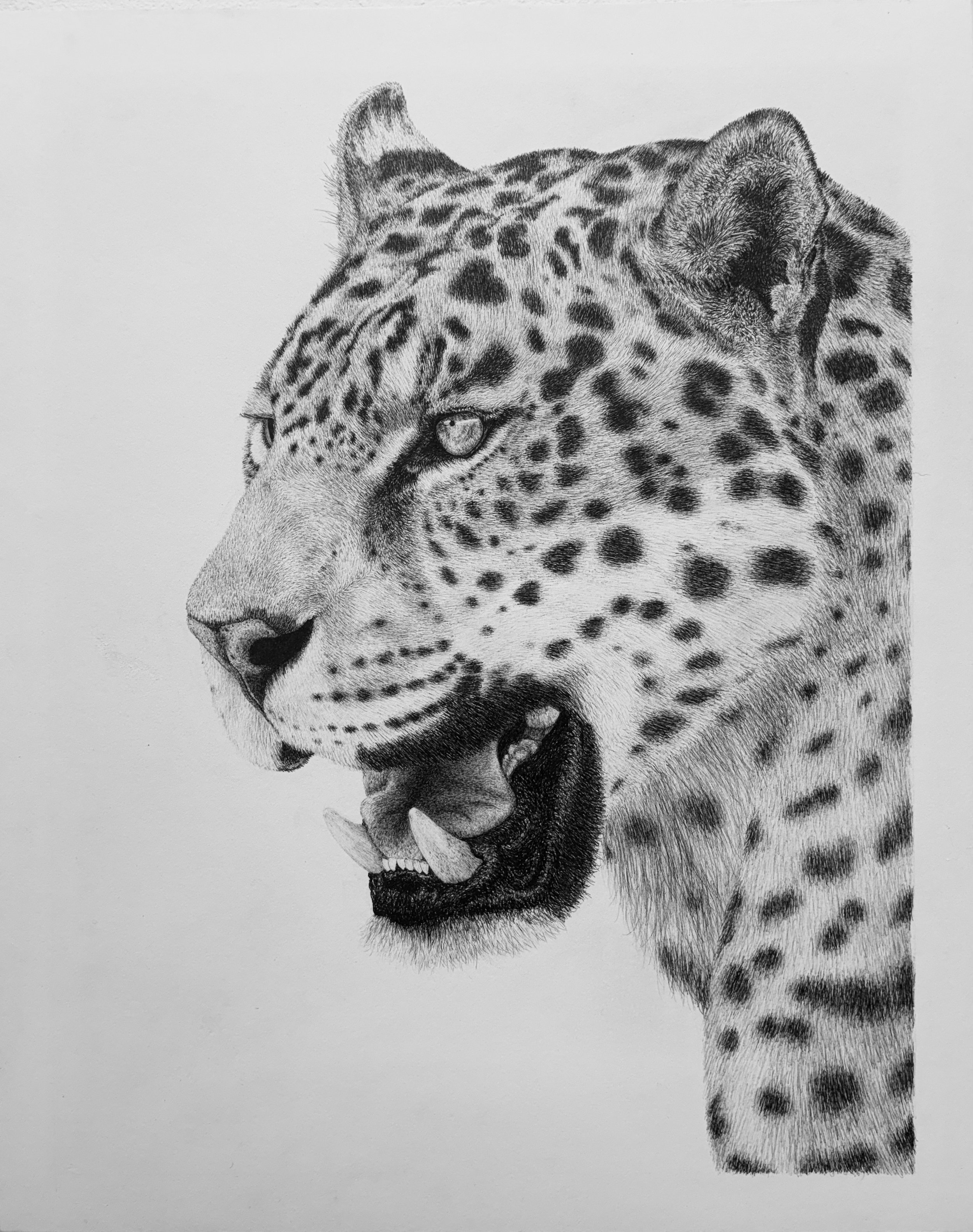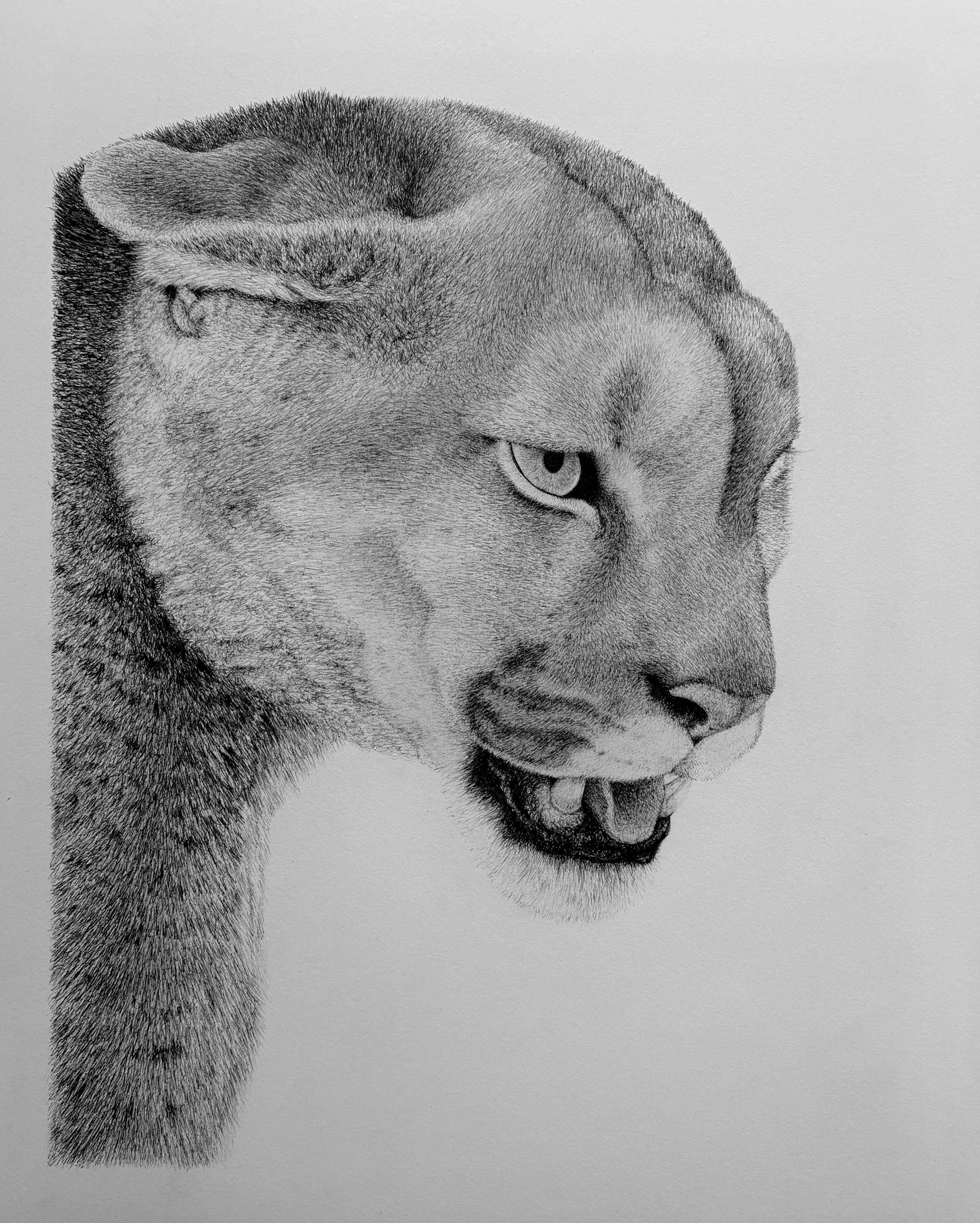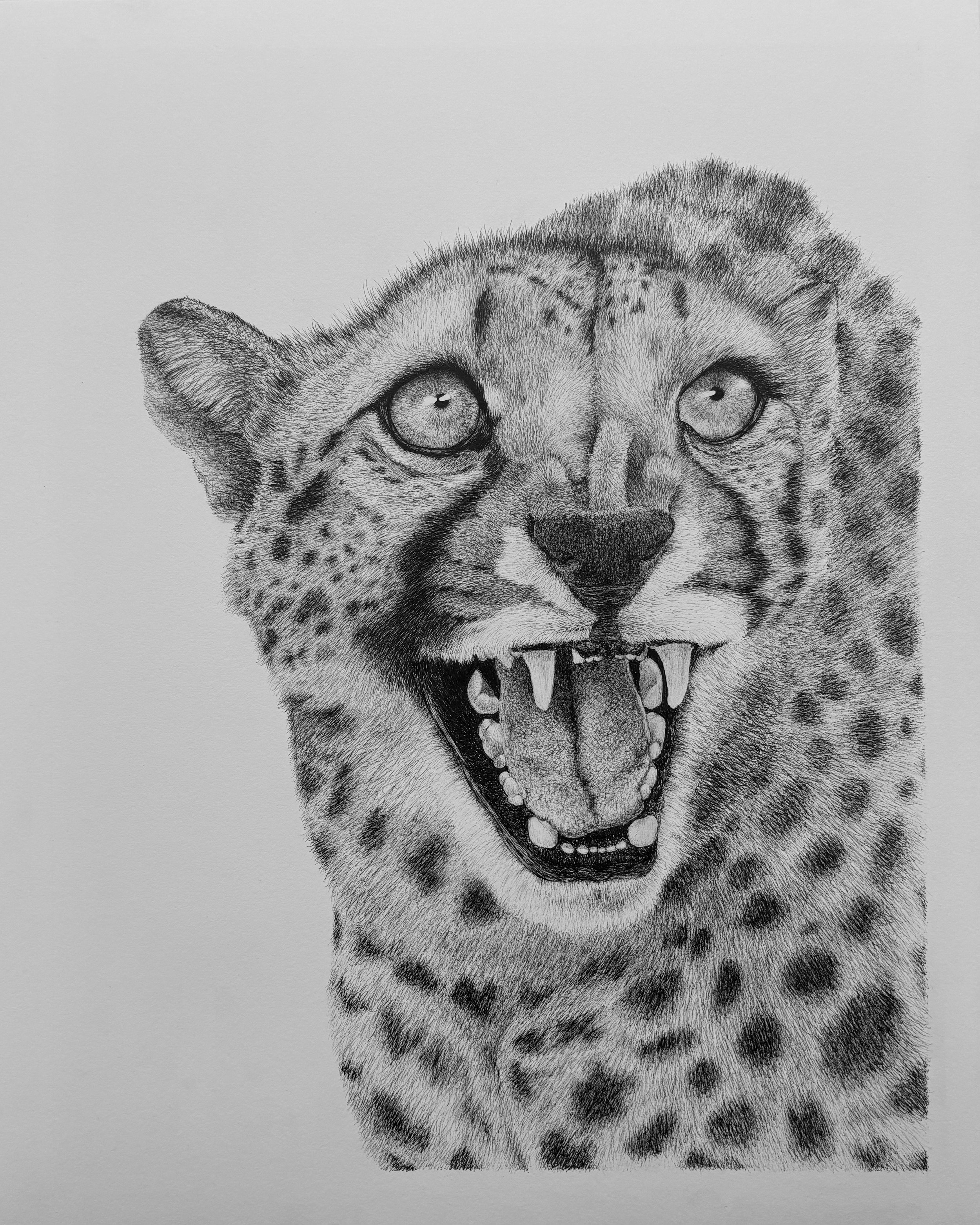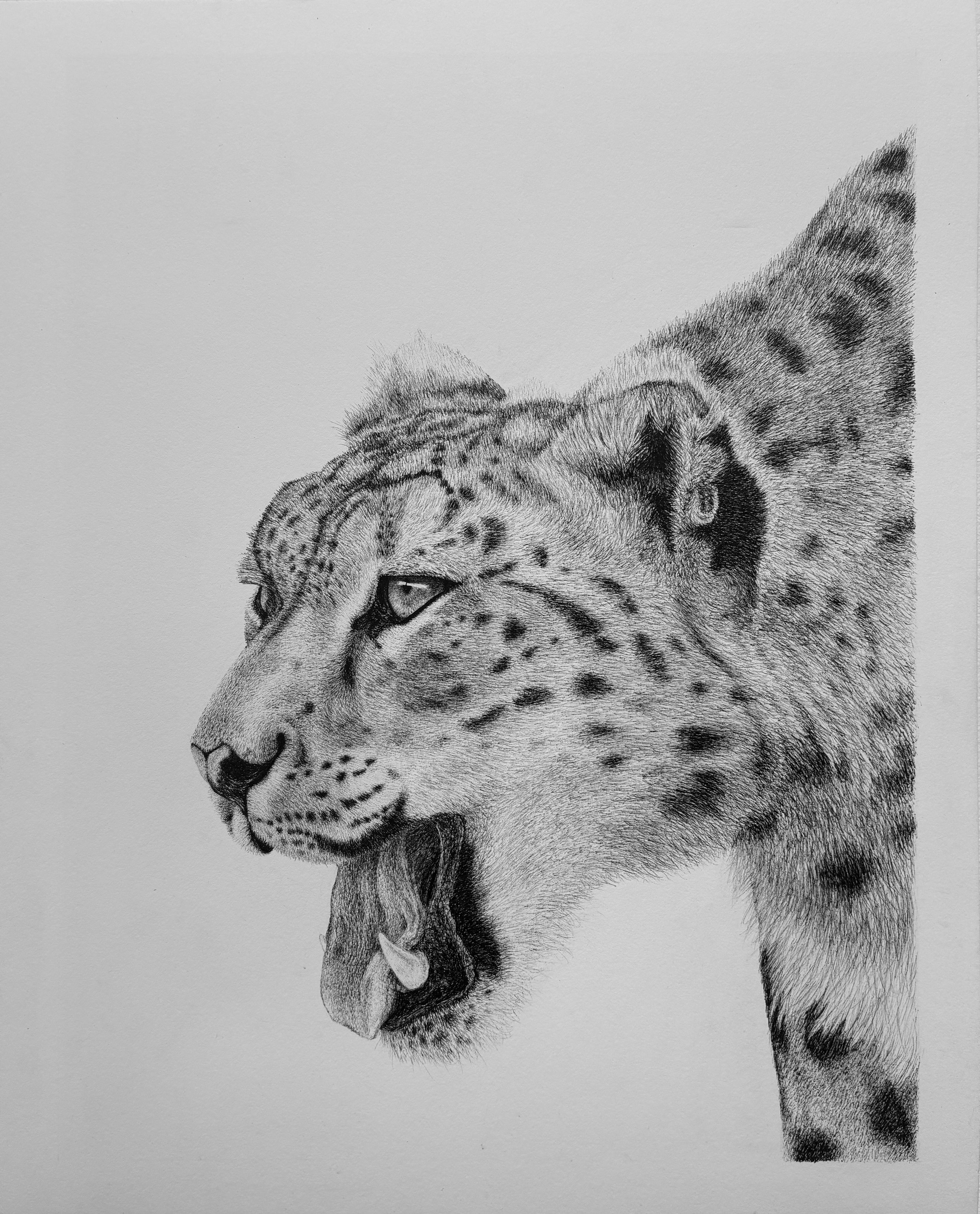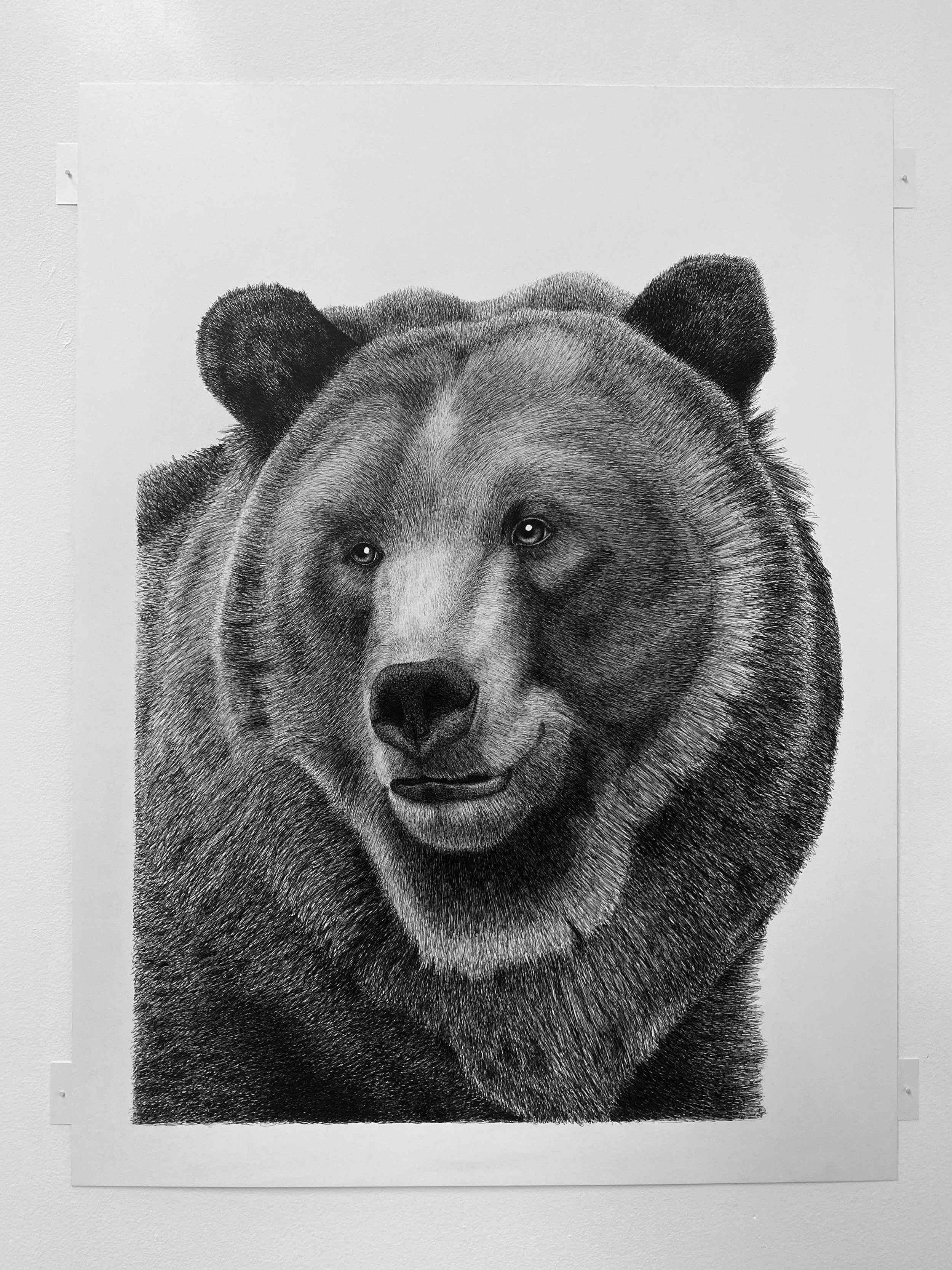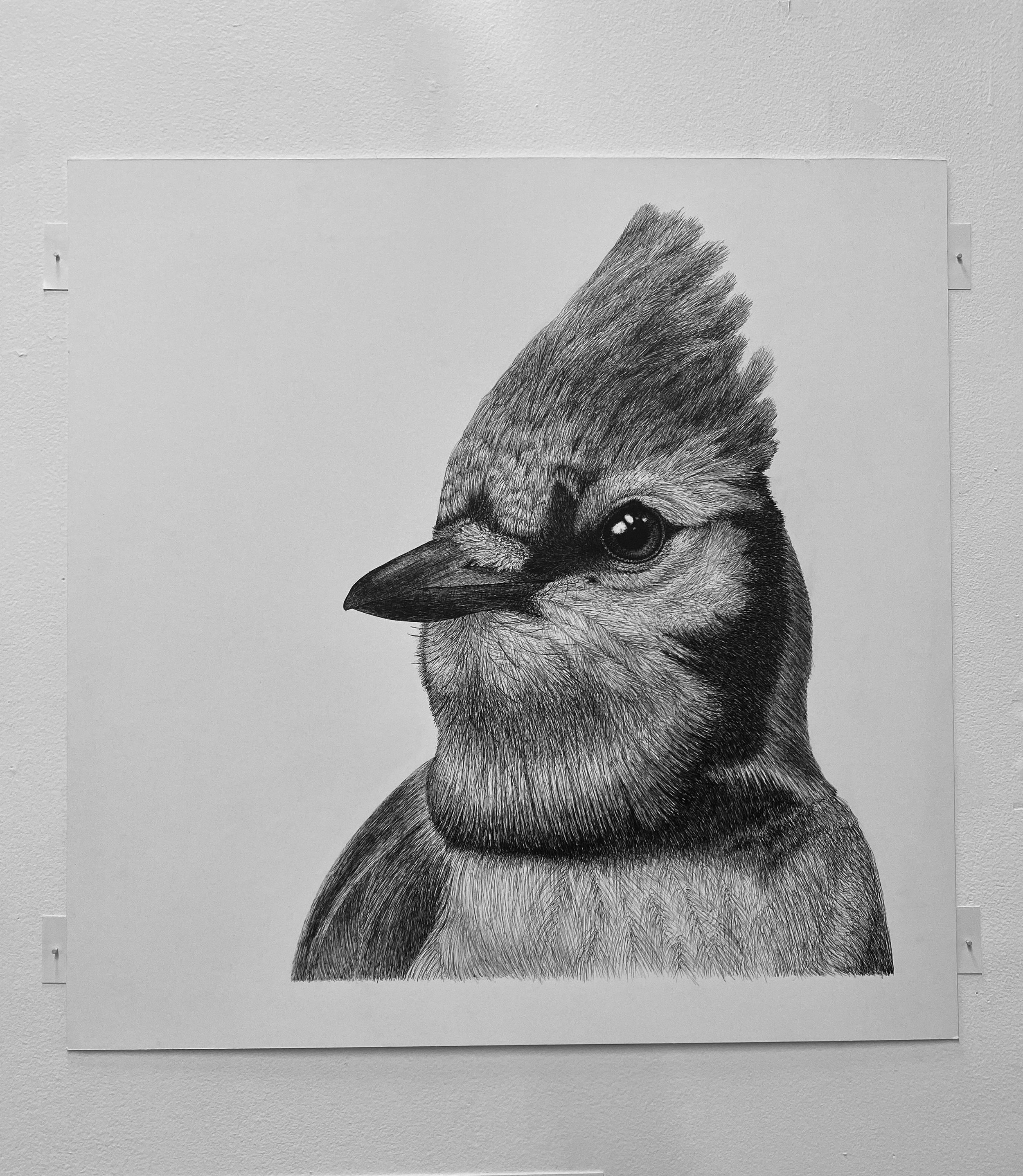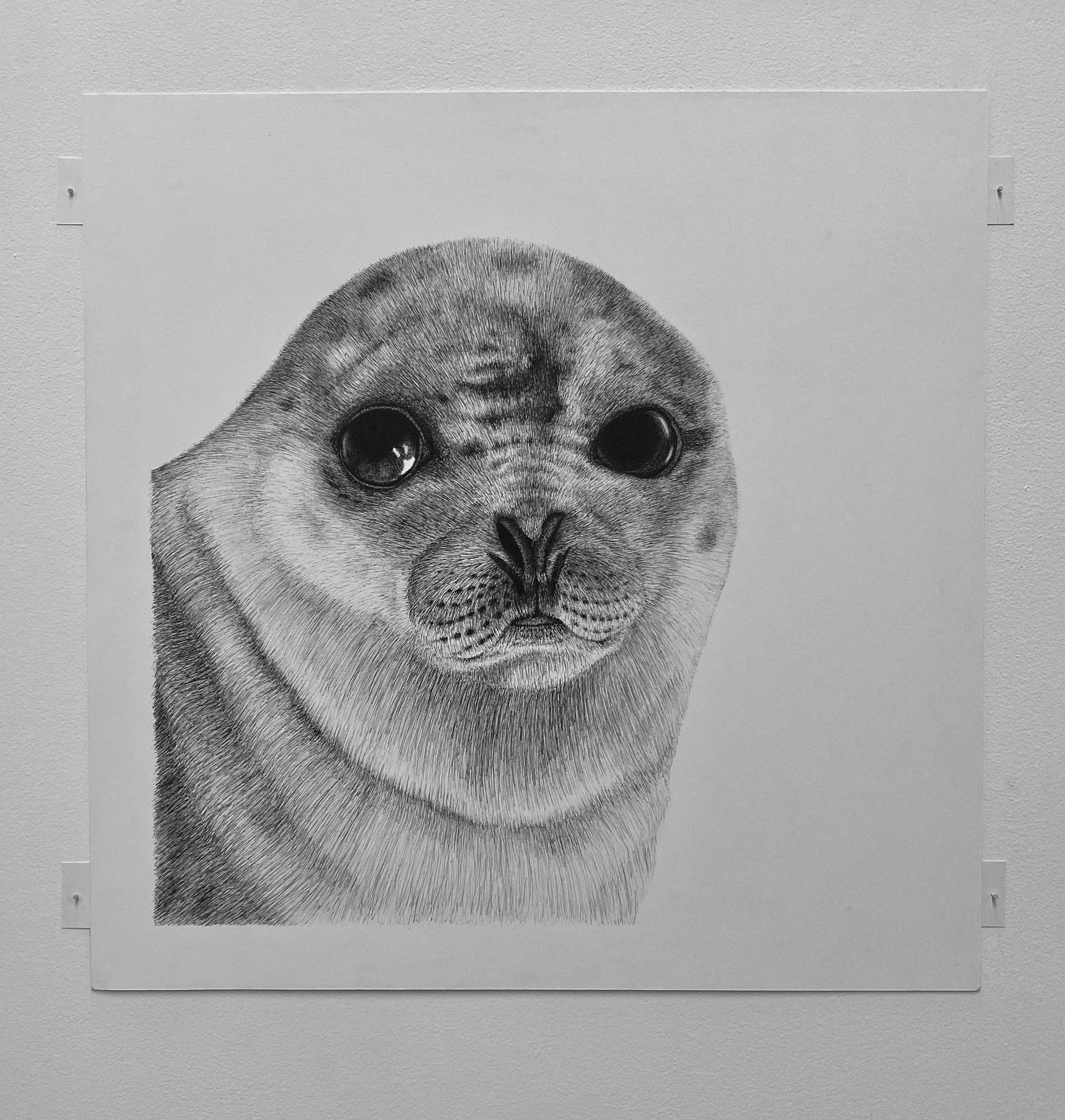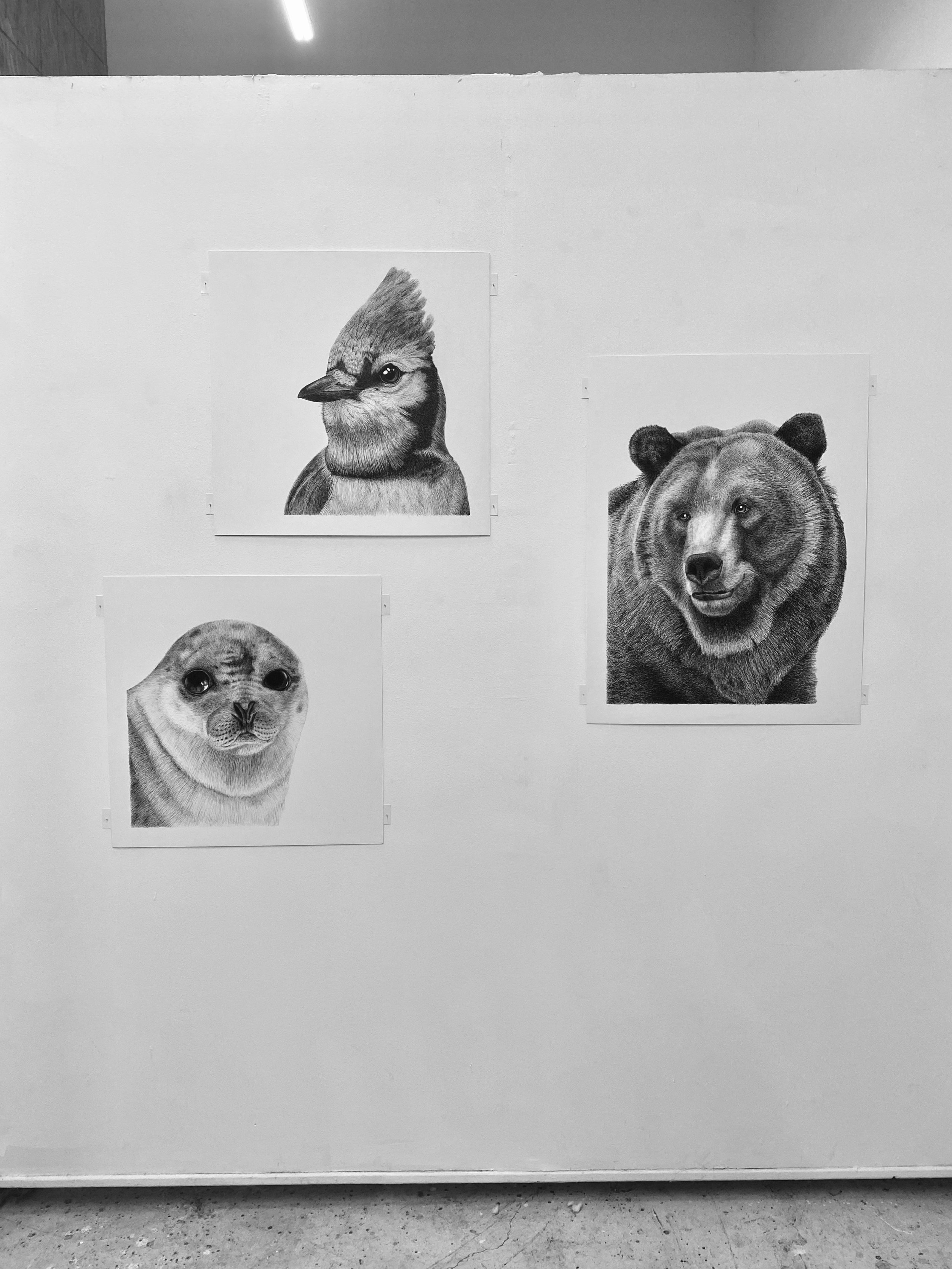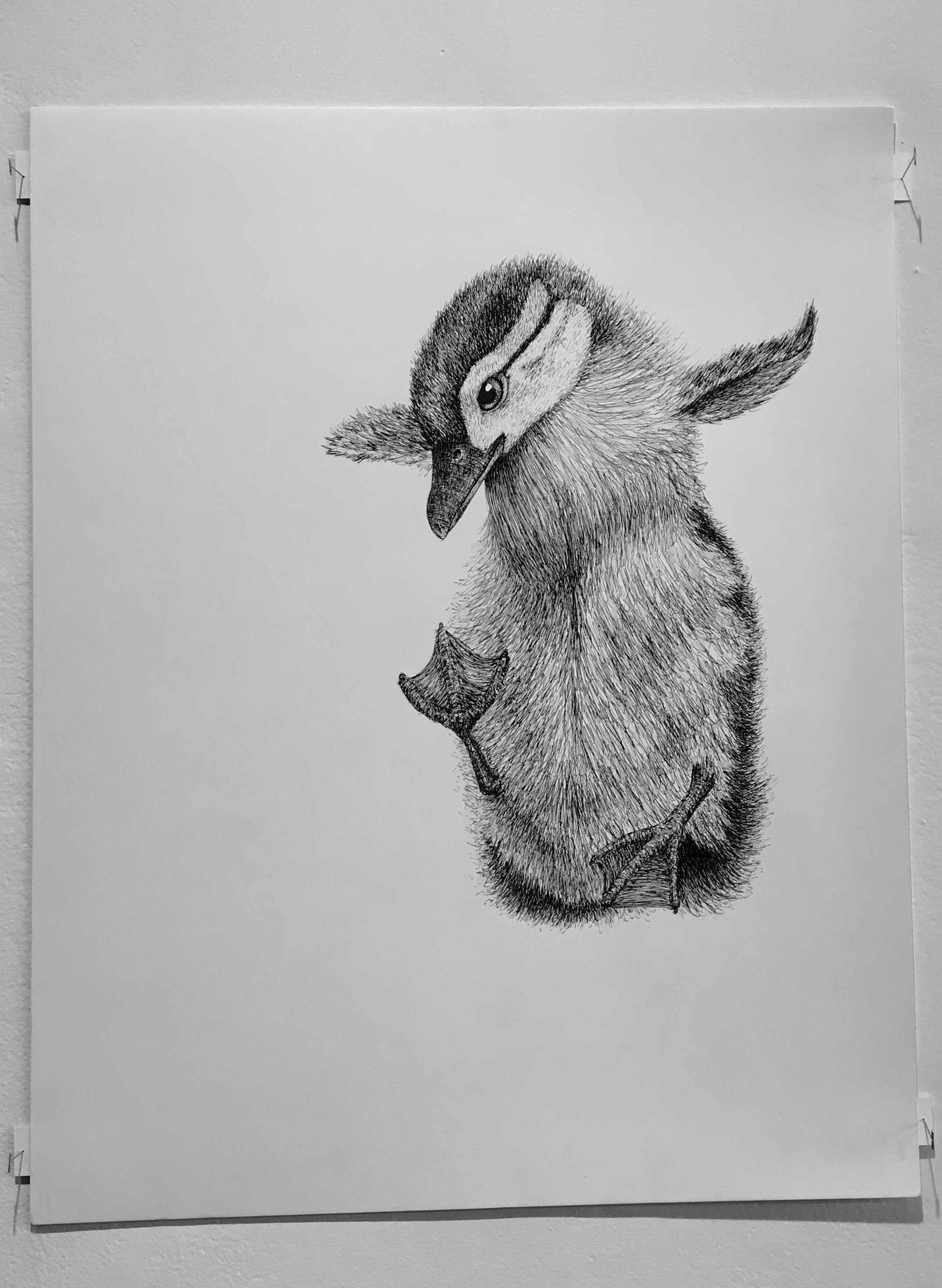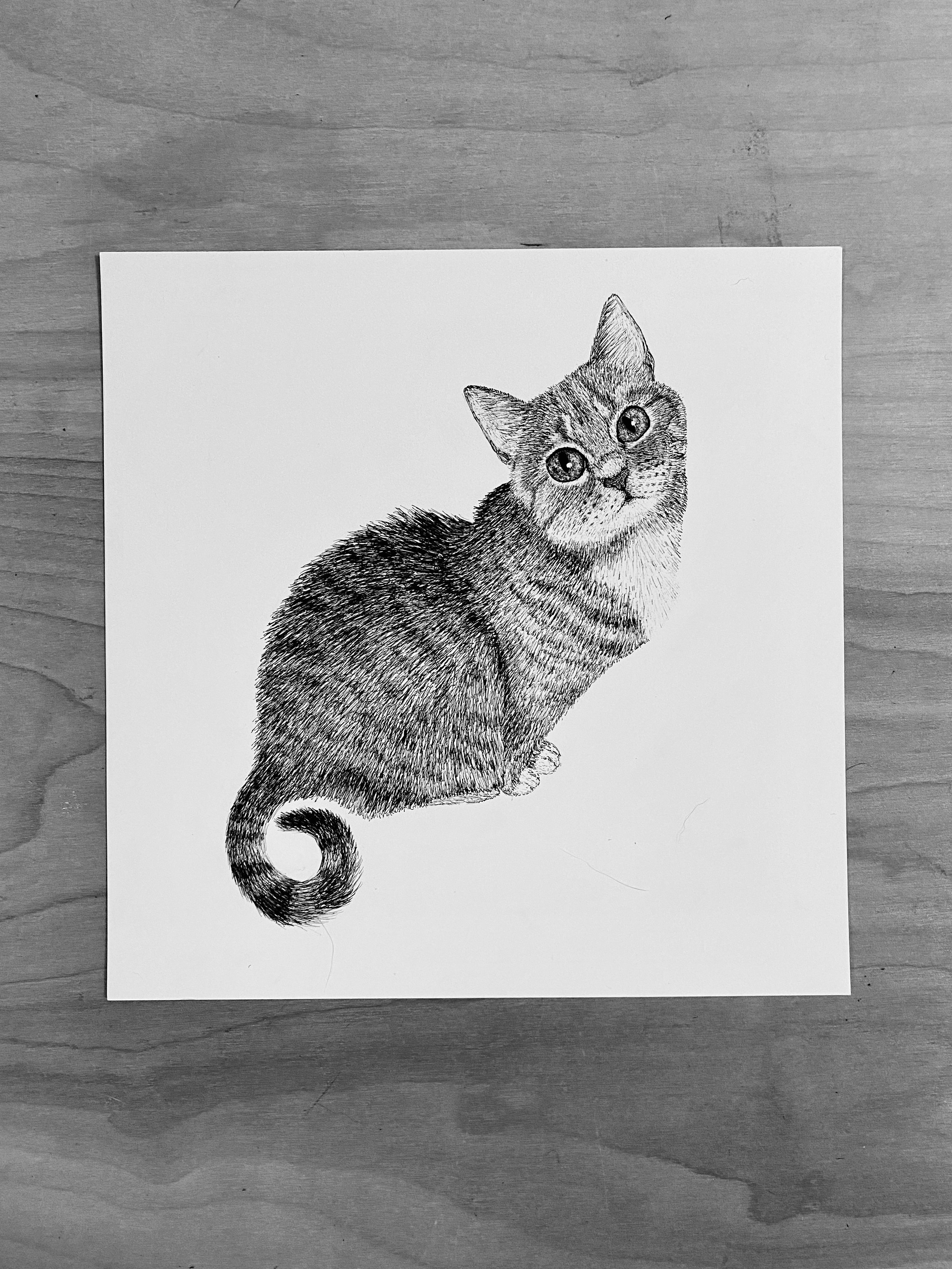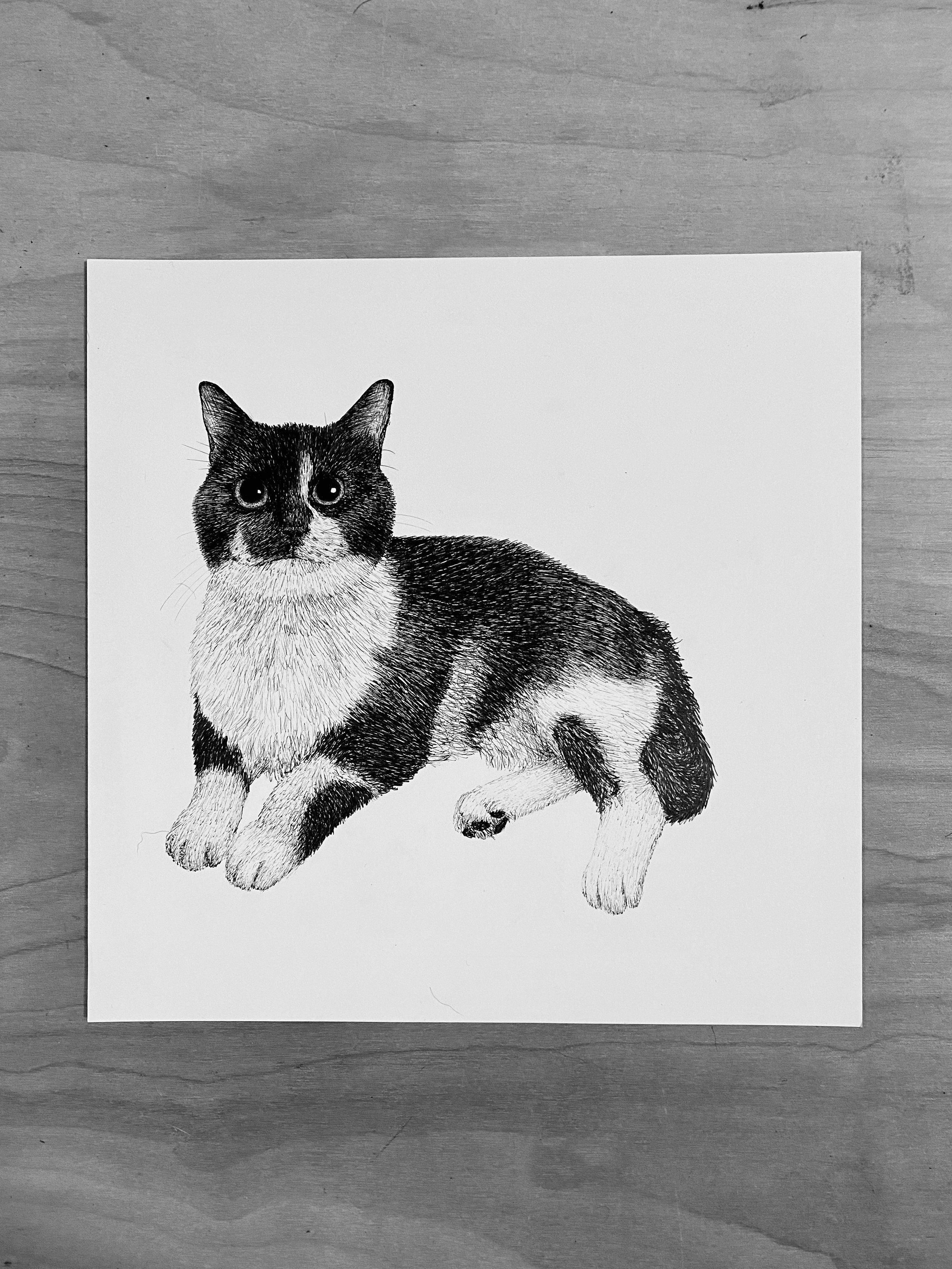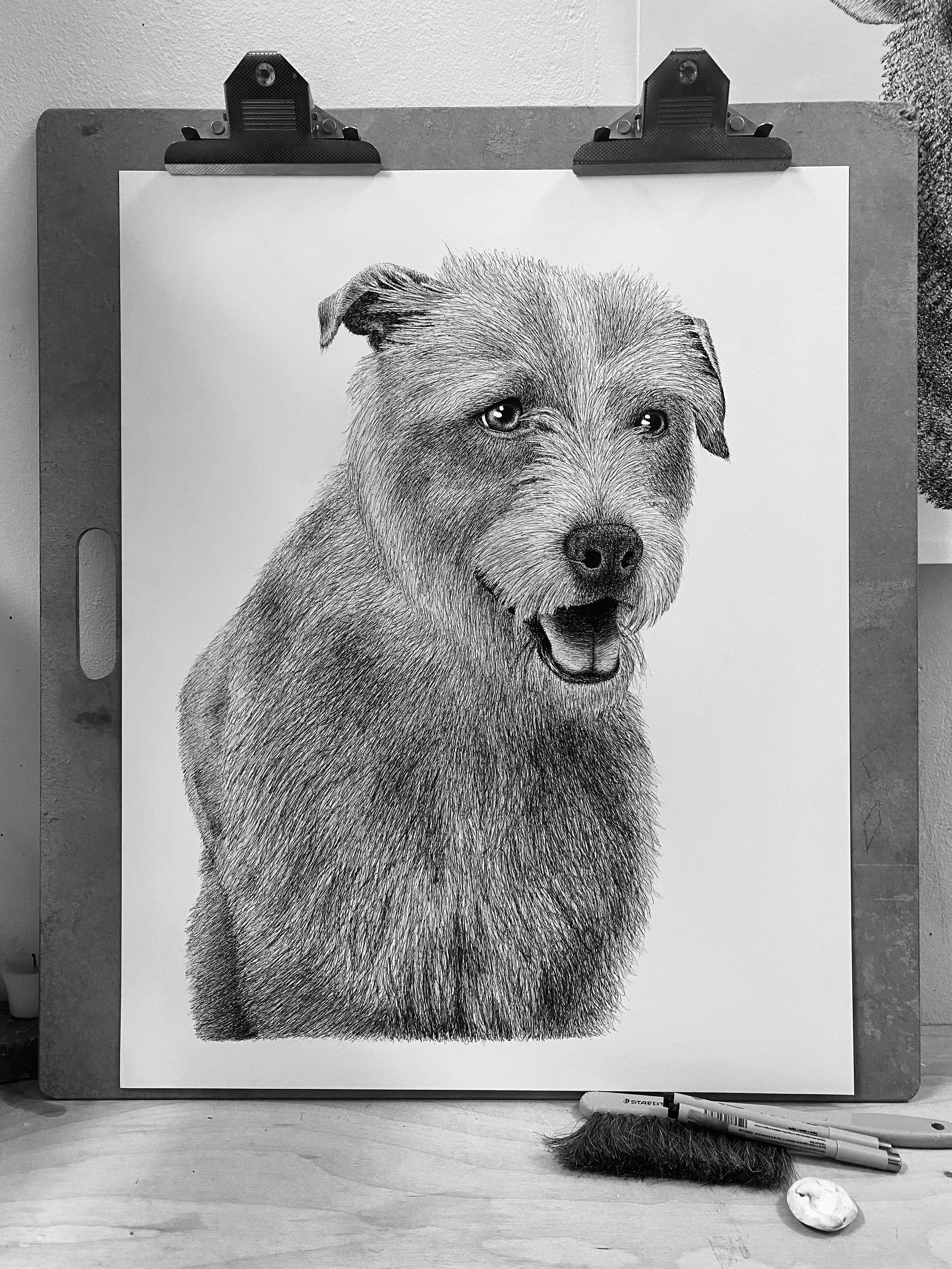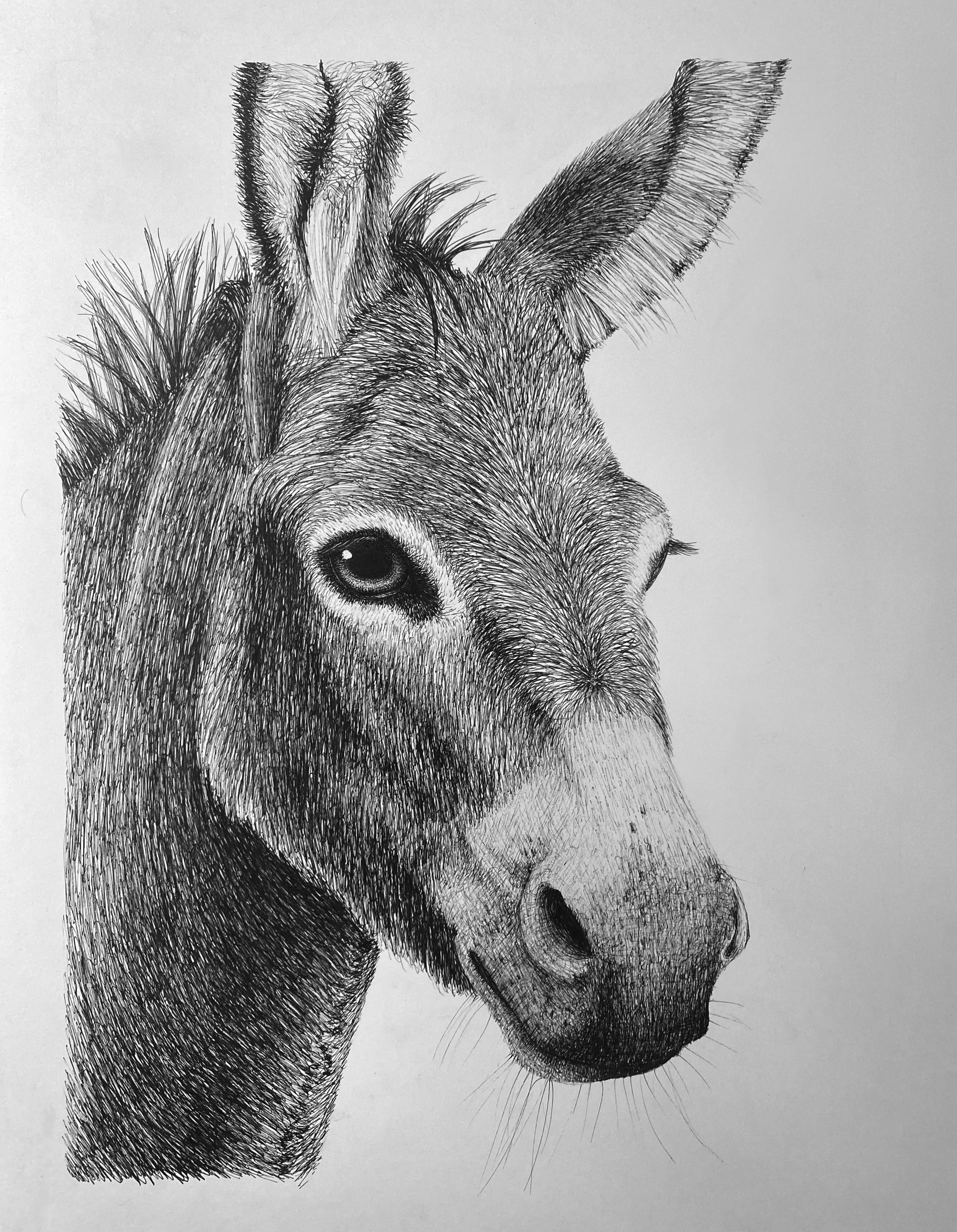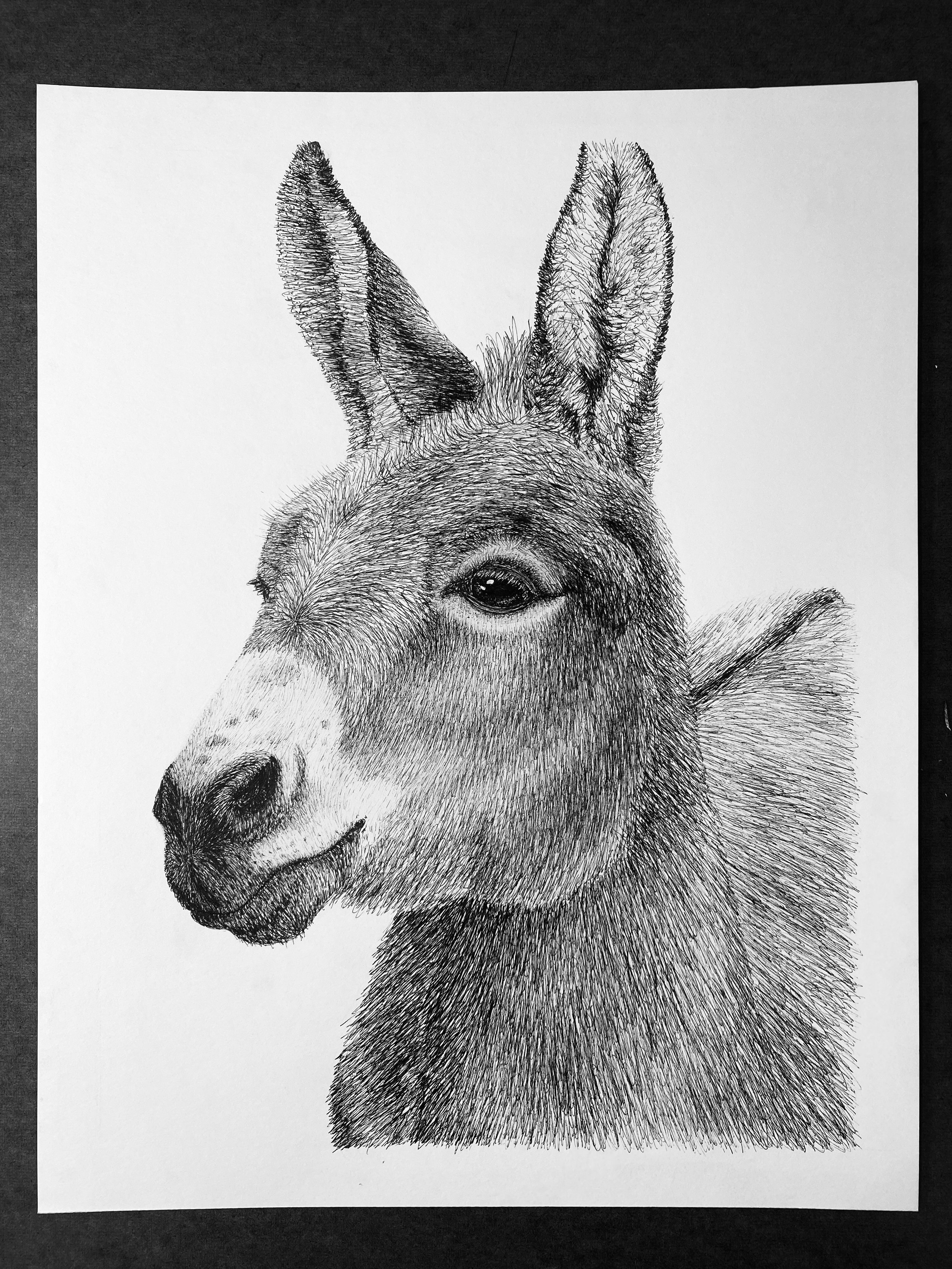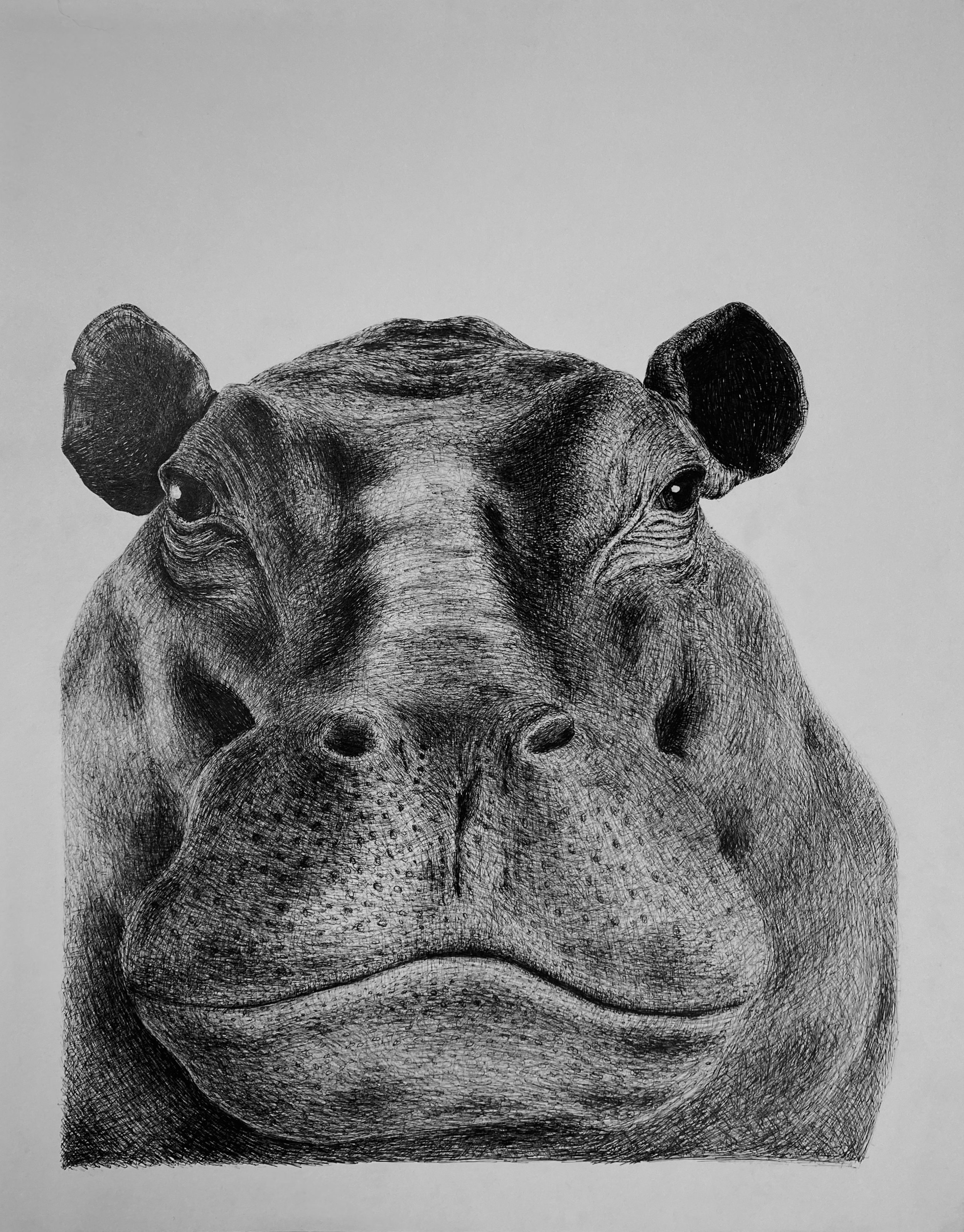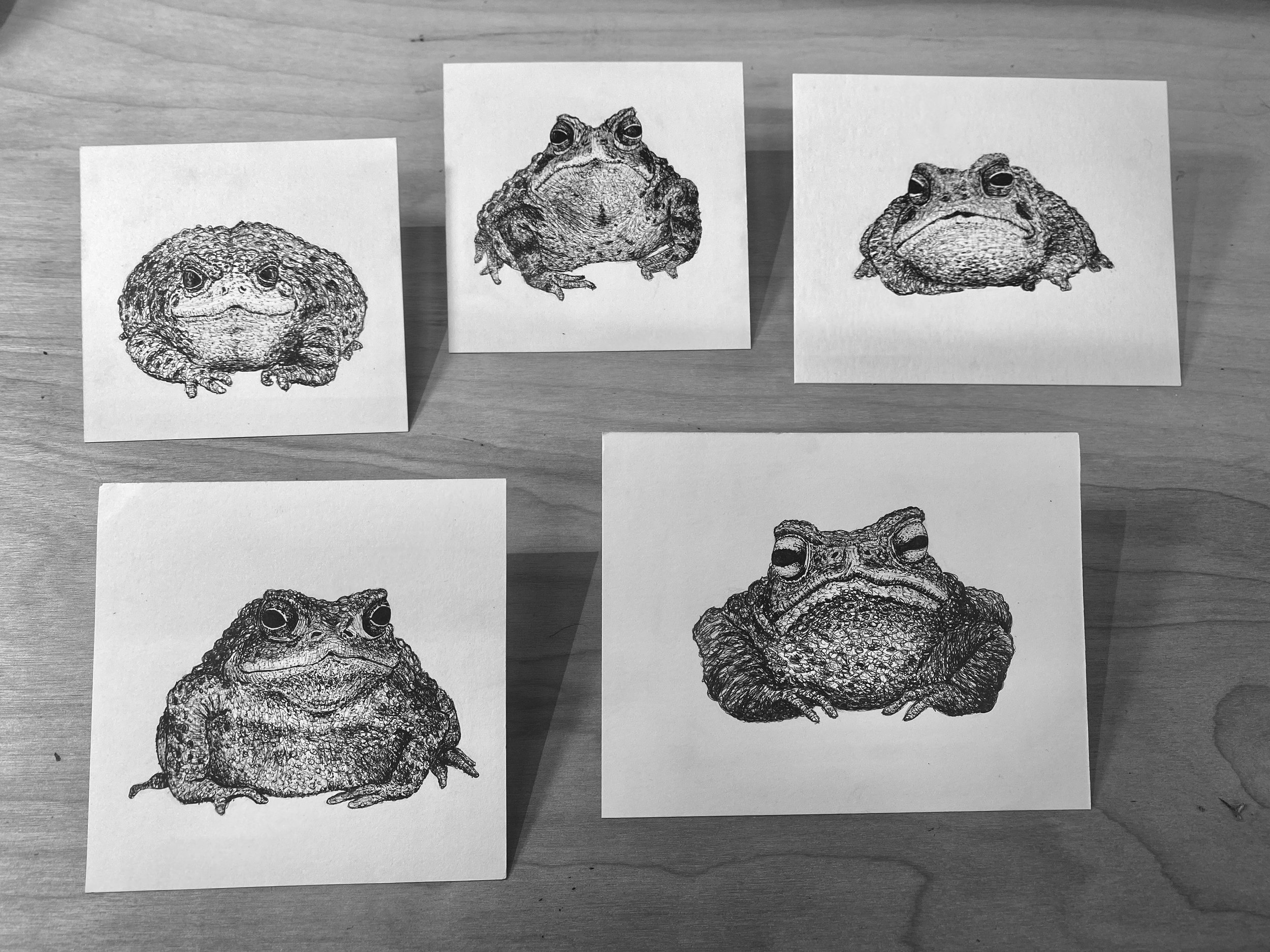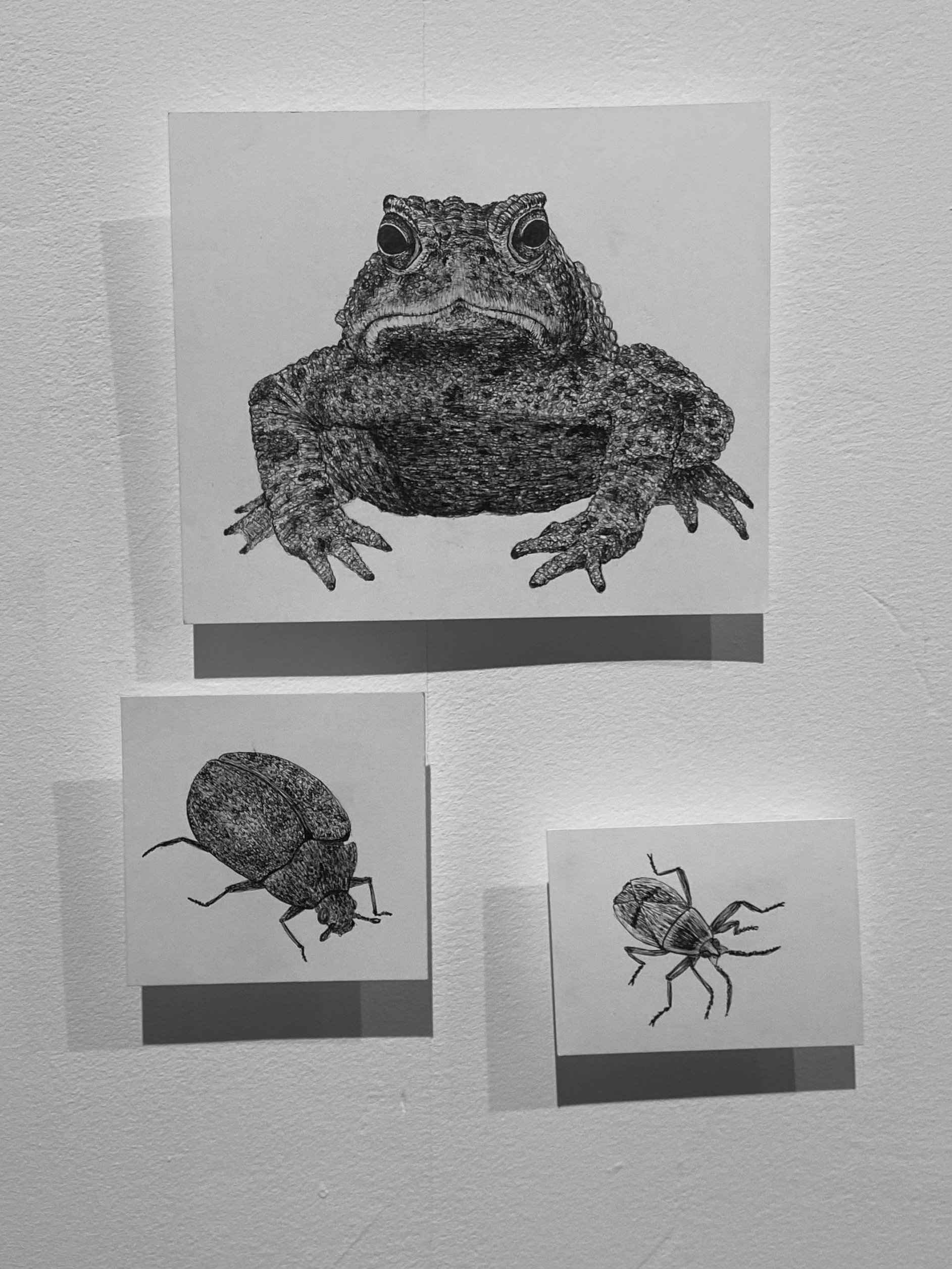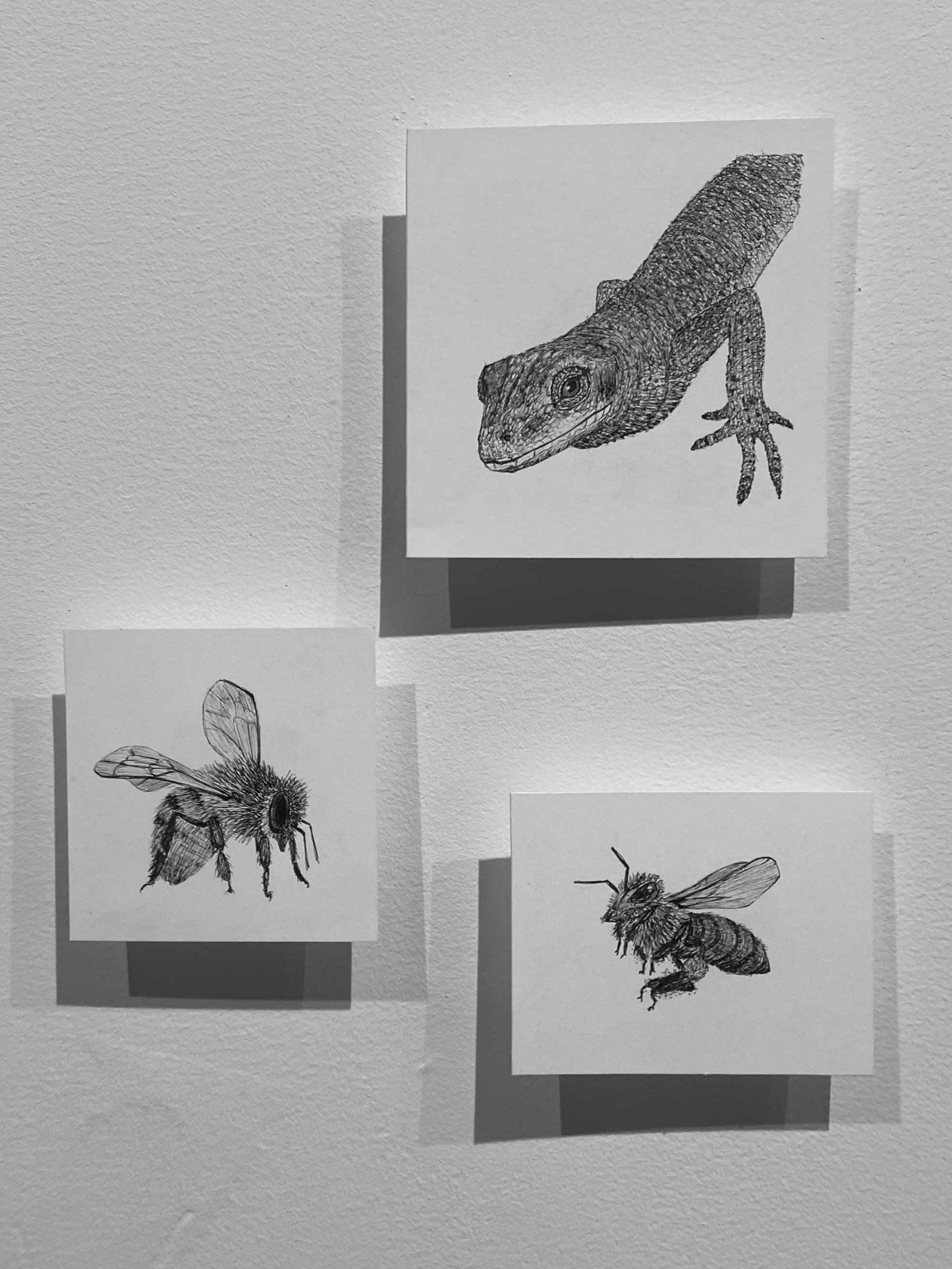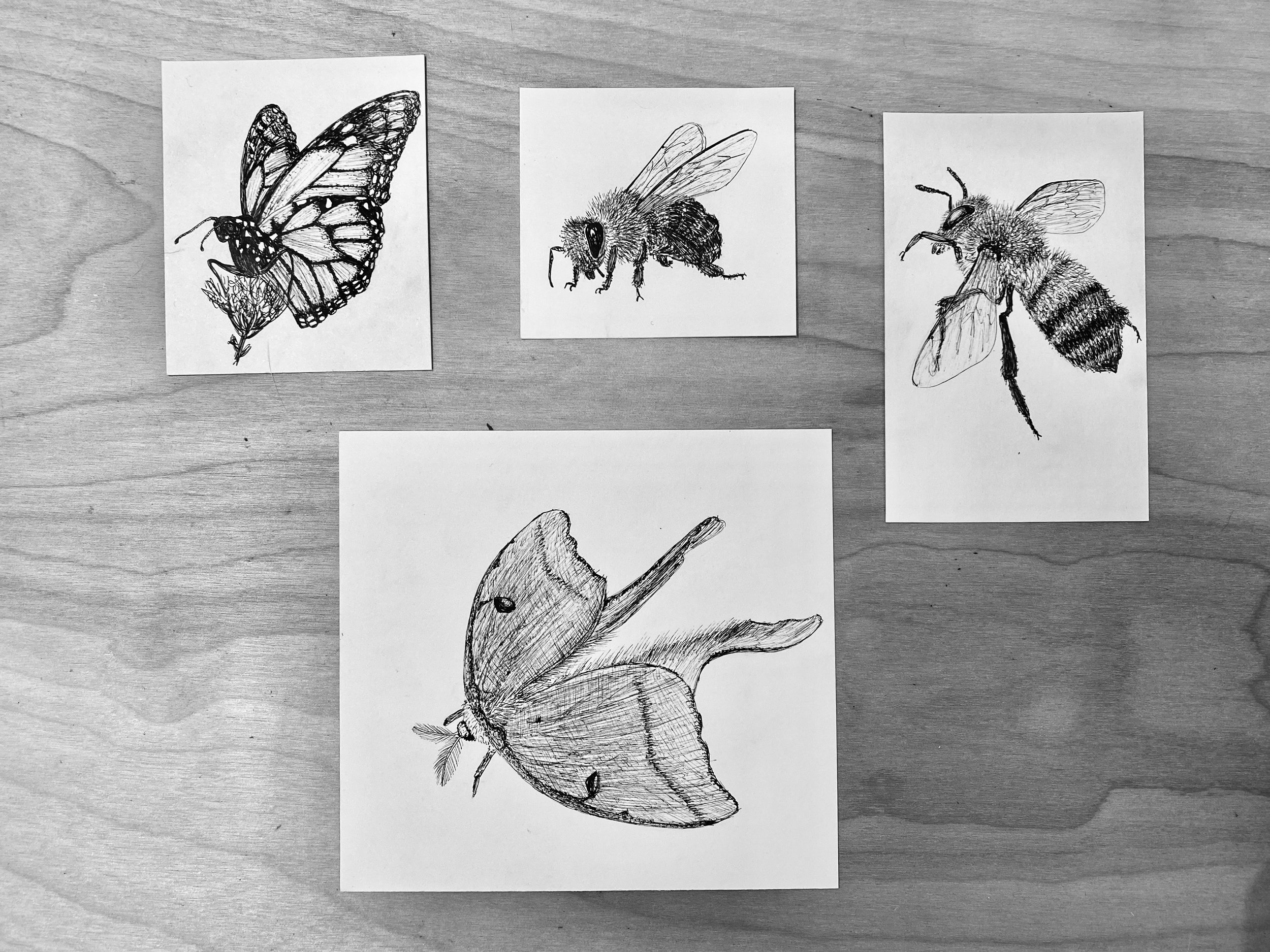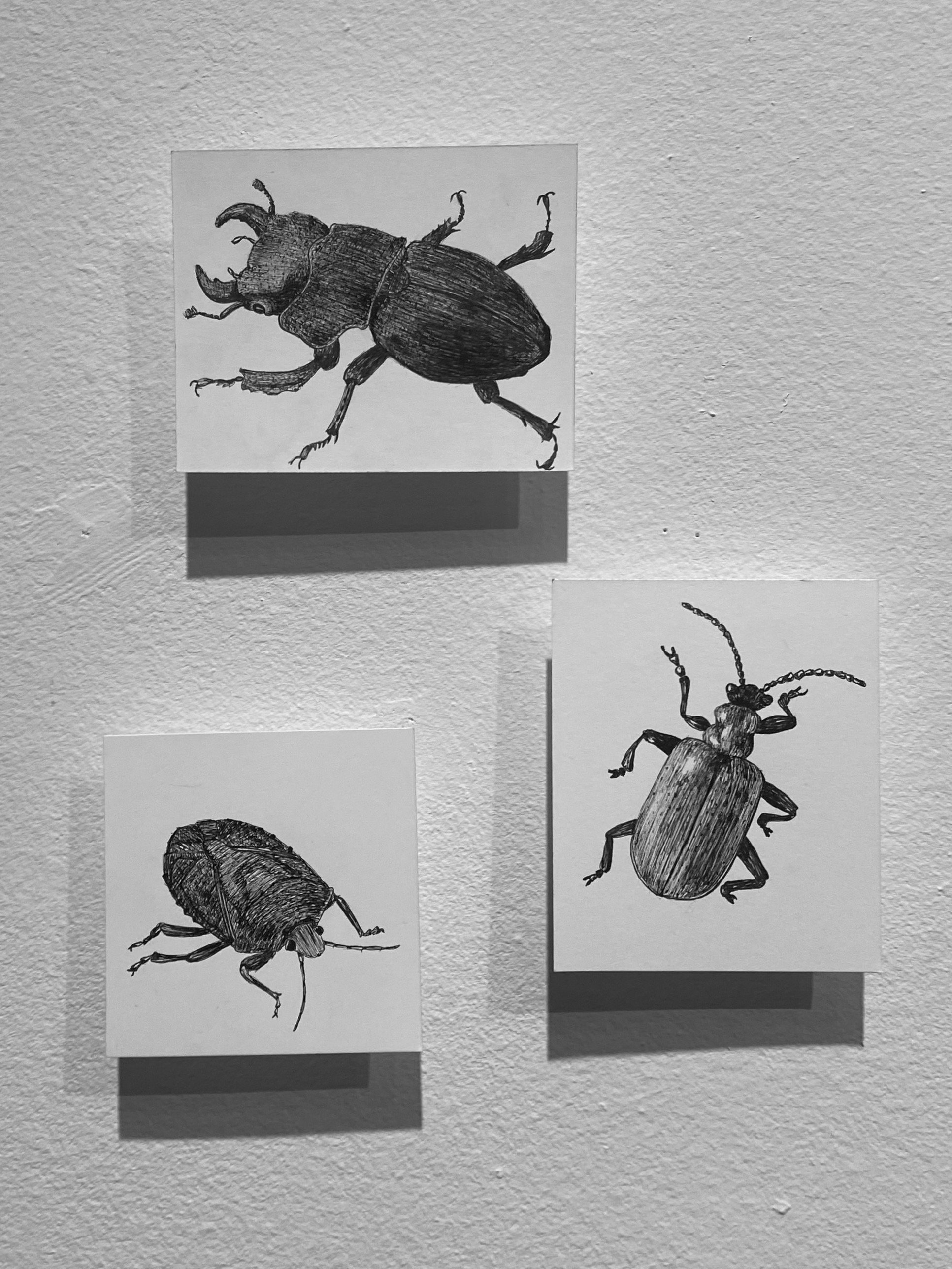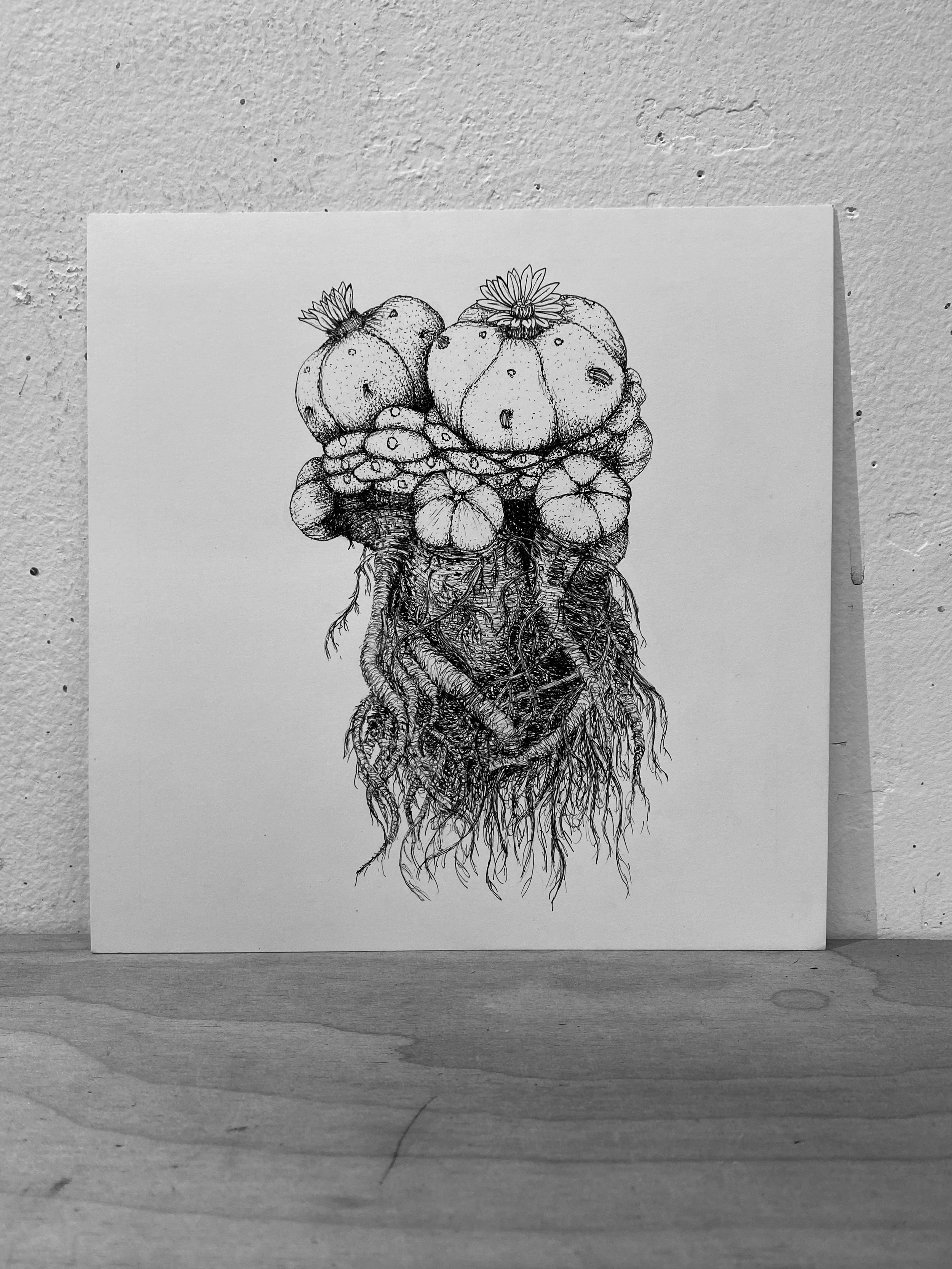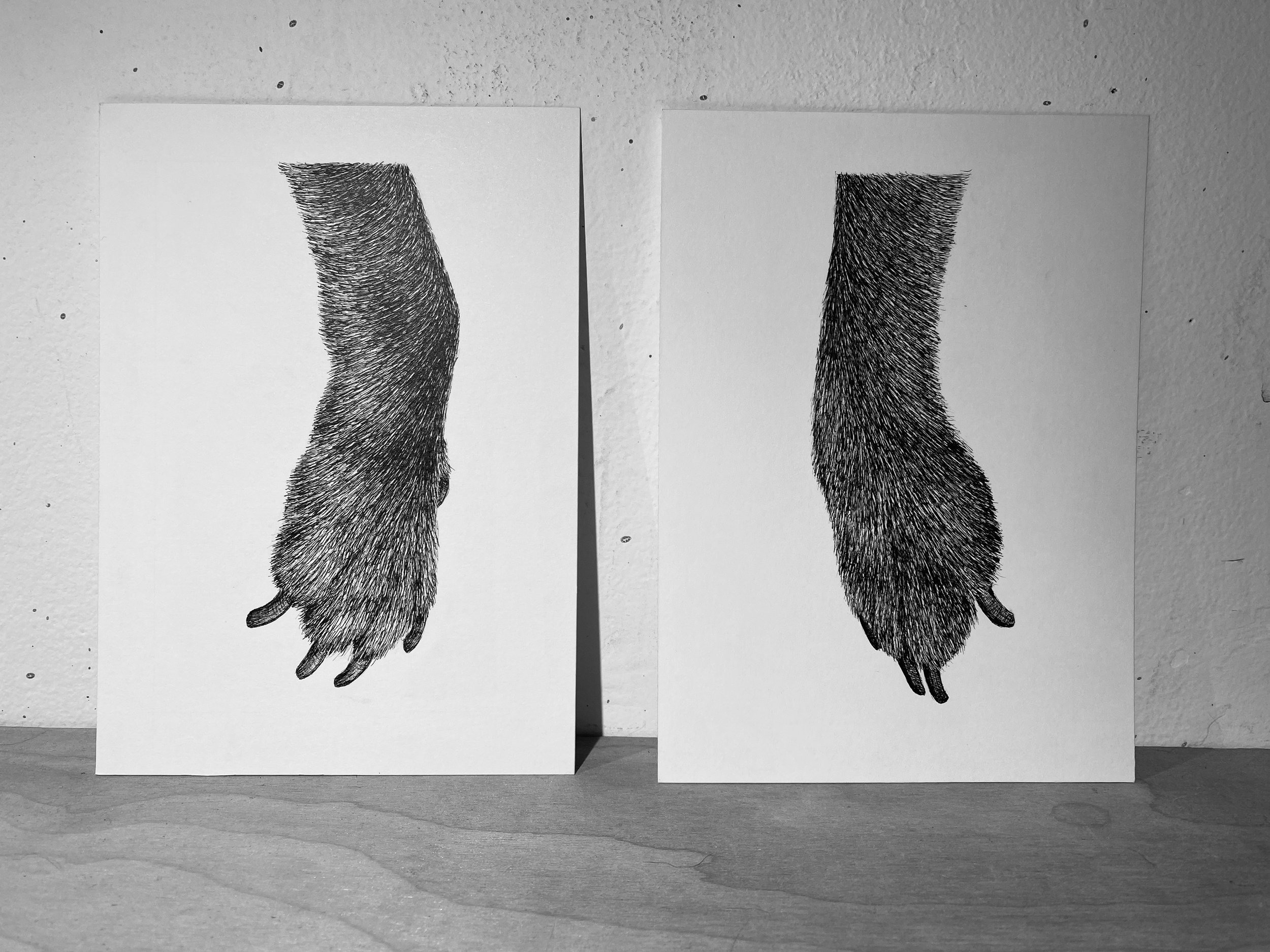My drawings are a product of resiliency as much as they are of tenderness. As I spend hours bent over my drawing table making repetitive layers of various pen marks, I build a relationship with my materials, my references, and my own inner world. This process, which pours so much of my physical and inner self onto the paper, yields resulting figures with a depth of expression and texture that feel alive. I experience the physical toll that this process takes on my arms, hands, and shoulders as I grow this body of work, and I can’t help but think that I’m passing some of my own life into each drawing.
I think frequently about what of myself I’m leaving behind. I grew up socialized to believe that partnership and progeny were both natural and expected as part of a fulfilling life. I am now a woman who lives alone with no children, and who is on a cusp where the biology of pregnancy might no longer be the option I once thought it was. My family ages around me and, more broadly, I observe a world on the brink of irreparable climate damage. Living through this, the idea of legacy is often on my mind. I don’t think of these drawings as offspring, though. Instead, I think of them as remains of myself, proof that I existed and felt and connected to something. Proof perhaps that I am capable of connection. Proof that a piece of myself could exist beyond my own mortal coil, even if only for a short time. In this, I feel connected to the very human act of looking at the world and needing to capture some small part of it in line. I wonder if the ancient homo sapiens thought of legacy as they drew their animal portraits on cave walls. I wonder if they saw parts of themselves in the animals they drew.
There is a tension in my work between the instantly recognizable figures and the length of time it takes for me to bring them into being. In other words, between what is clear and what is unspoken. In my daily life, I often find myself struggling with verbally expressing myself clearly, often frustrated that I’m not being understood. I frequently find myself confronted by feelings that seem too big or forbidden to have or to talk about. And so I draw. I start my drawings with a personal reflection, then a graphite sketch, then an intentional layering of pen marks. I start first with the eyes, then I ink out from there, intuitively making whatever marks are necessary to achieve the various textures. The black ink offers no clues as to what emotions a viewer should feel, the white background no context, the animal figure no clear human archetype. My viewers must instead confront their own relationship with whatever they project onto the figure. Often, people have their own ideas about what the creatures in my work might be feeling, and often that is different from the shape of the emotional landscape from which they emerged. I’ve been working on letting go of the idea of being understood, though. I think, perhaps, it’s enough to connect.
Drawing


